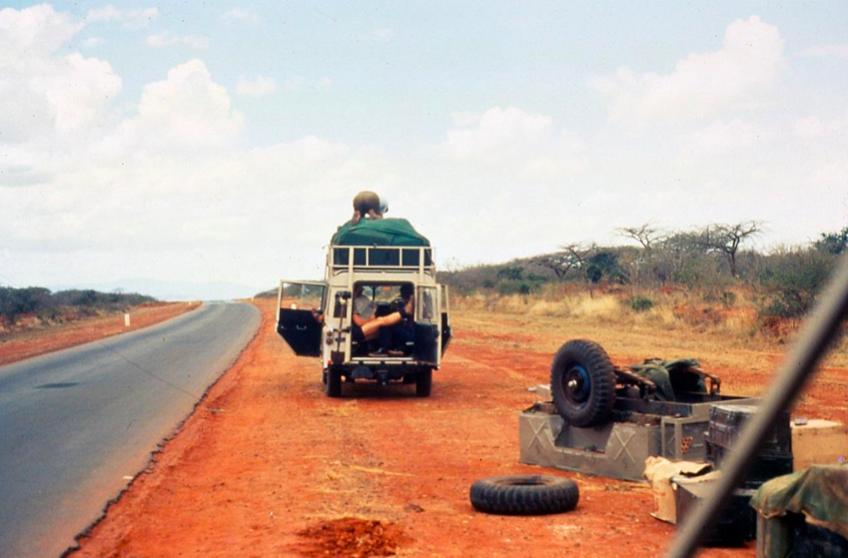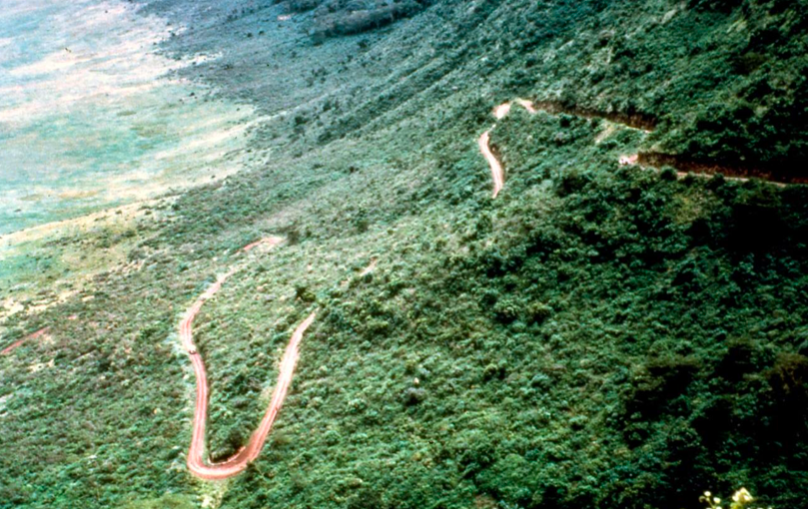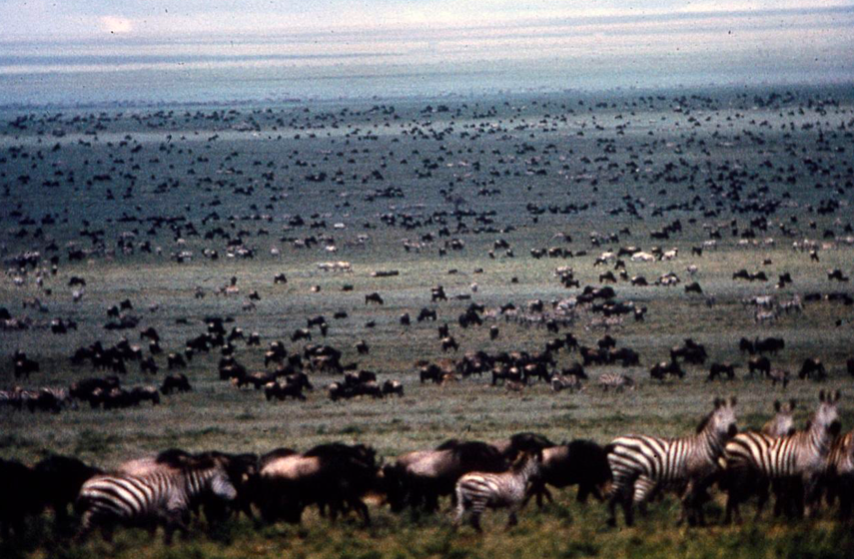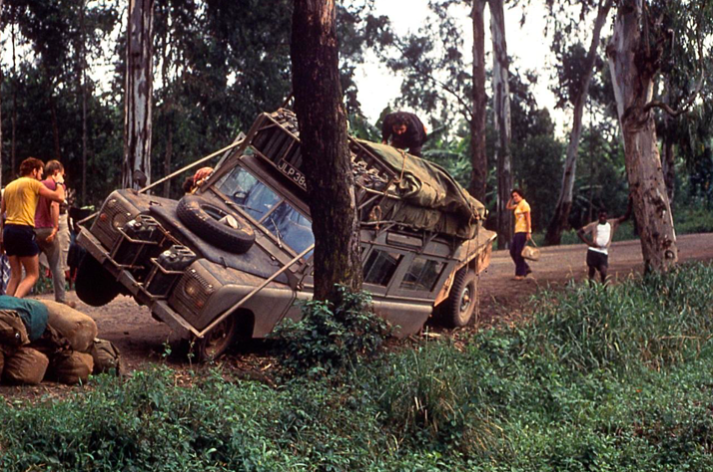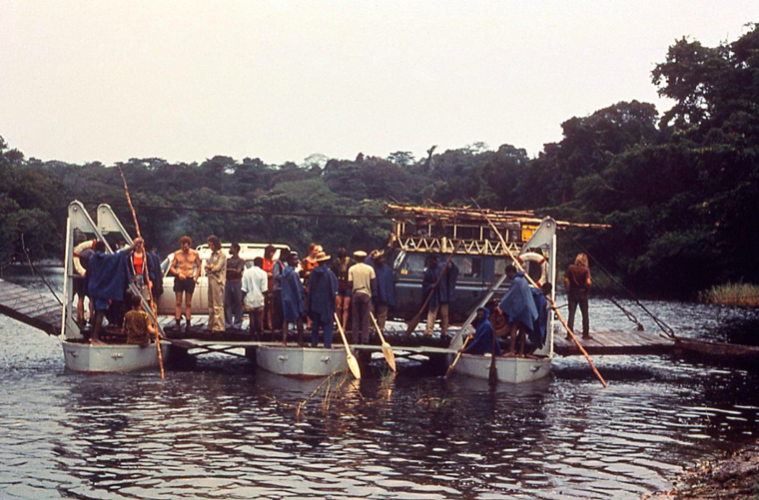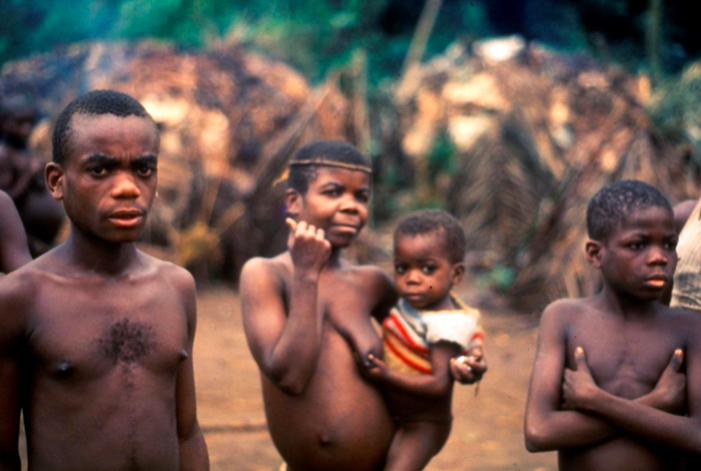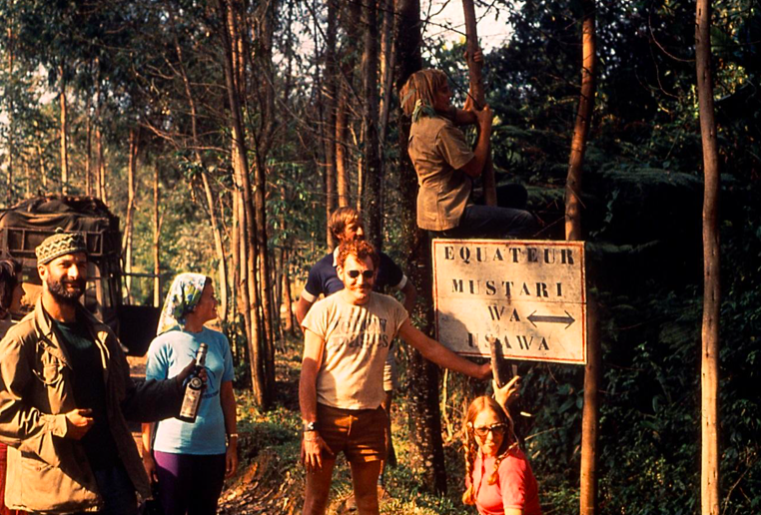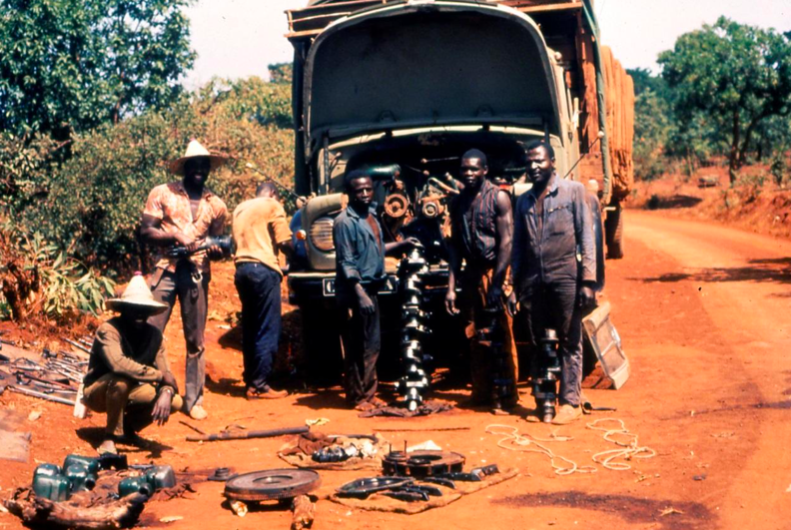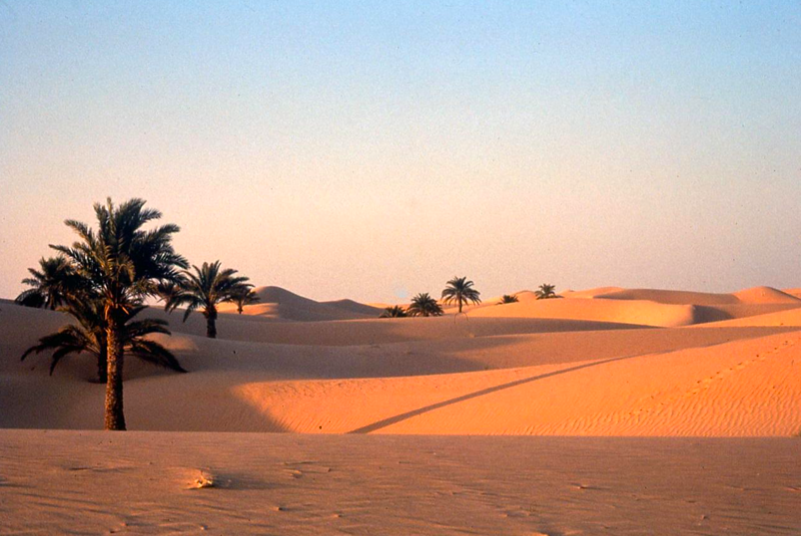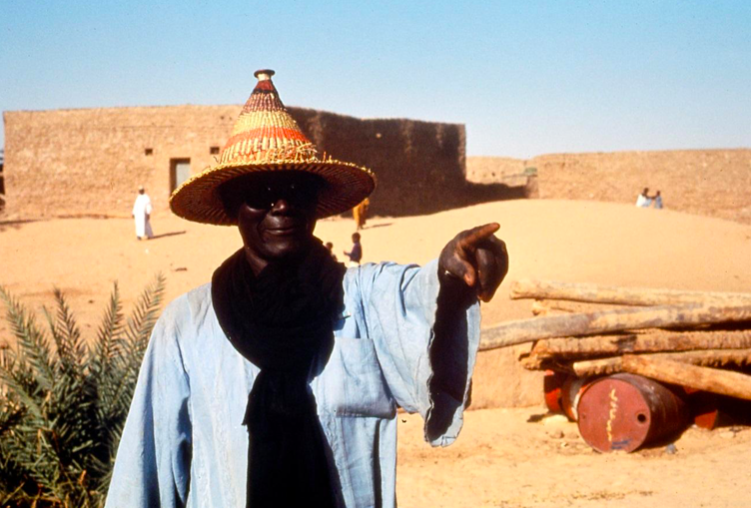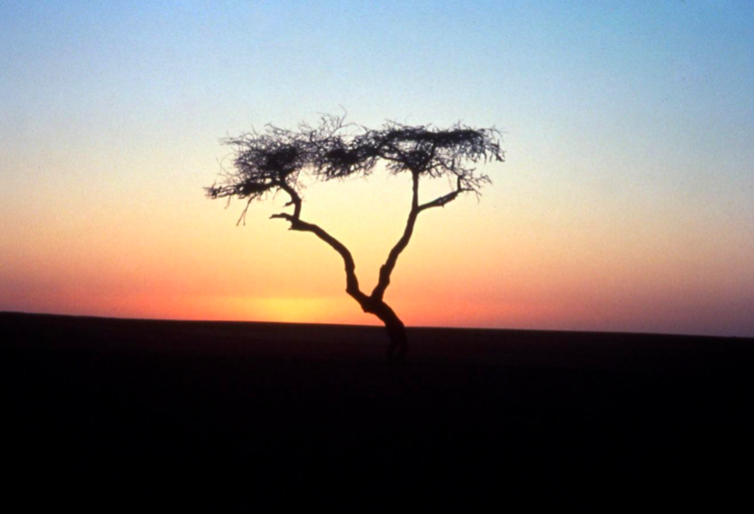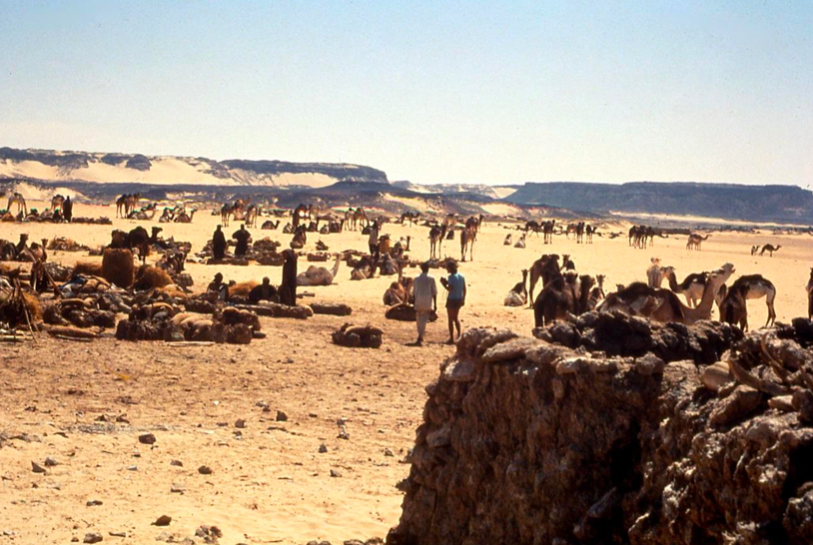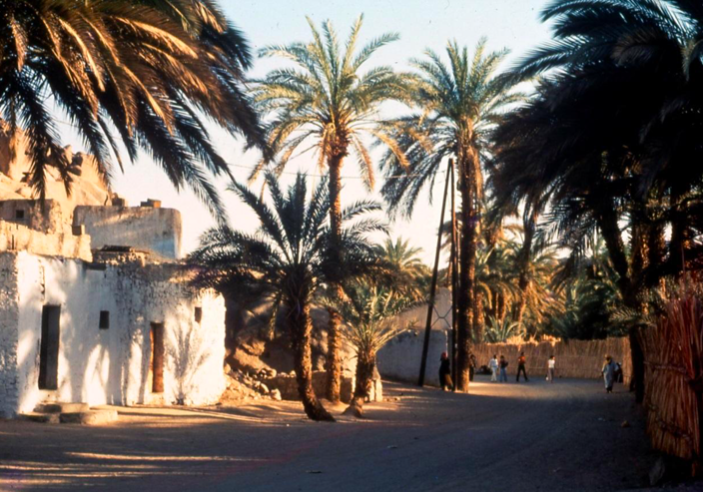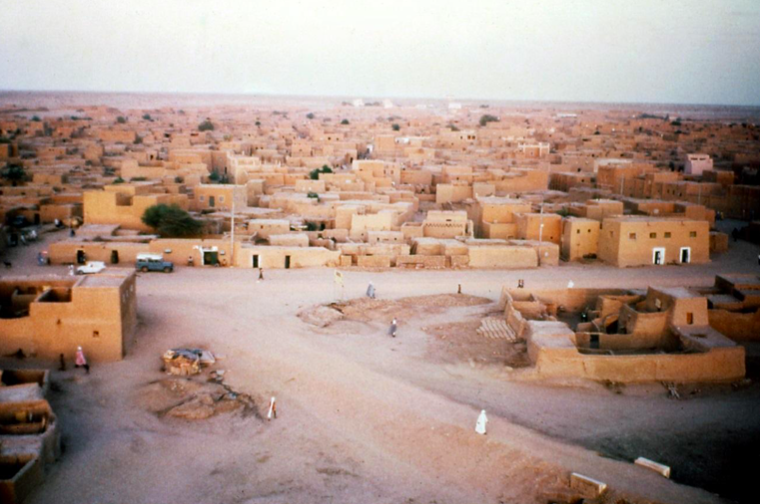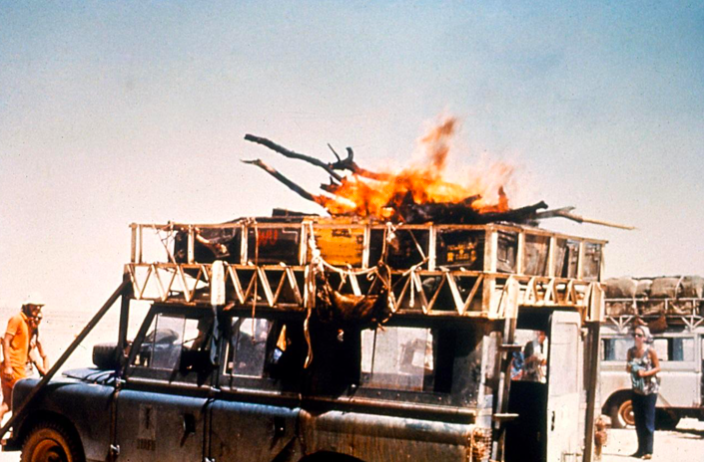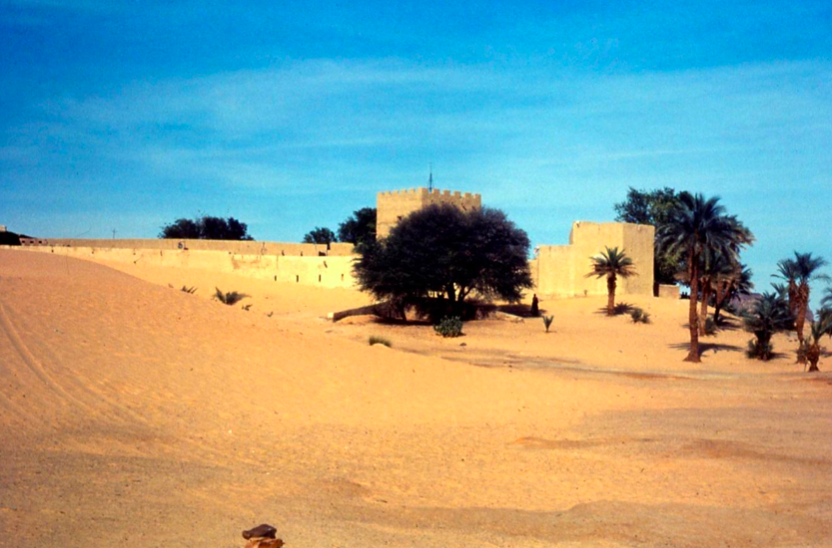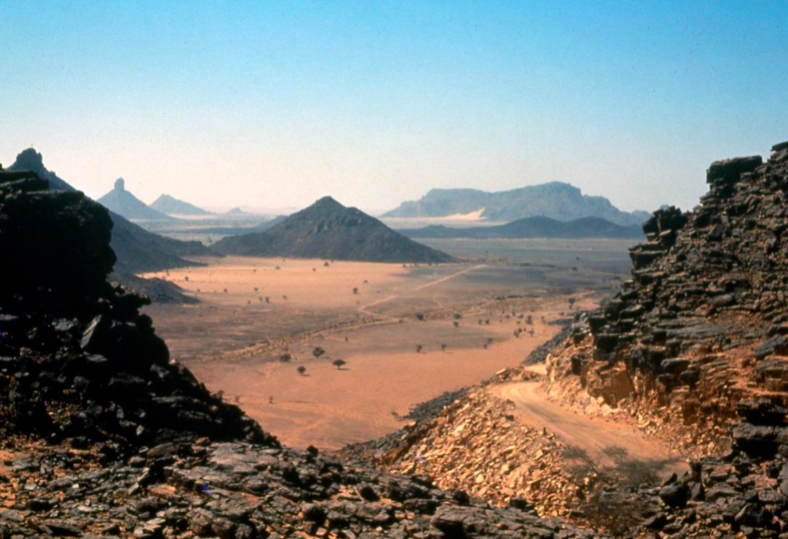
Disclaimer: Any views expressed by individuals and organisations are their own and do not in any way represent the views of The Heritage Portal. If you find any mistakes or historical inaccuracies, please contact the editor.
I had been in South Africa for four years after being transferred from the company I had been working for in London. I spent 1968 in Johannesburg and was now working in Durban.
I was twenty-six years old and was in a position where I needed to make some decisions about my future. I was in love with South Africa but at the same time needed some adventure before I put my roots down. Travel was the obvious answer.
After a lot of of thought, I decided to return to London and see what transpired from there but how to get there was the question. Option 1 was to fly but that was quick and boring. Option 2 was to book onto one of the Castle mail ships but this was slow and boring. Option 3 was to travel overland through Africa. This sounded by far the better option and in March 1972 I flew from Johannesburg to Nairobi with Olympic Airways arriving in the early hours of the morning. I had booked in advance into the Park Hotel in the centre of Nairobi and the taxi duly deposited me at the hotel’s entrance just after 03:30. A guy in an old army greatcoat checked me in and handed over the key. The room was a good size and reasonably clean except for the bathroom which certainly needed some attention. After the flight I was feeling pretty tired and decided it was time for bed. When I pulled the sheets back it looked like the bed had been used as an operating table in the Crimean War – there was blood all over. Needless to say I pulled out my sleeping bag, slept on the floor and booked out first thing in the morning.
Nairobi in the seventies had still not been updated from colonial times and it was exciting just to walk around during the day. At night, things changed and you had to be intelligent about where you walked. I became friends with a group of Aussies and, one night, we ended up in a dingy strip club drinking Tusker beer. One of the acts was doing her thing when a great rat ran across the stage to exit stage right whereas our dancing lady duly proceeded to exit stage left. With great encouragement from his colleagues, yours truly saved the situation by leaping up on stage to take over where the previous act had left off. We didn’t have to pay for any further drinks that night.
I had now joined up with a trip that was heading for Tunis on the Mediterranean coast, with three long wheel base Land Rovers, through Africa.
Our first destination was a camping ground called Trade Winds about 20km south of Mombasa where the fourteen of us would get to know each other, prepare the vehicles and obtain provisions. Bonnets of the vehicles were painted matt black and long range tanks were fitted. Spare wheels were removed from the back door and fitted onto the bonnet. Secondary cooling fans were fitted in front of the radiators and the full length roof racks were checked.
The people who had put this trip together provided the team leader and a motor mechanic and both turned out to be excellent at what they did.
Each Land Rover had a heavy duty trailer and a full length roof rack and onto these were loaded tents, very basic sleeping stretchers, supplies, very frugal personal baggage and a host of other things including 250 litres of water and 250 litres of fuel, all in jerry cans.
Food would be obtained on route where possible and supplies replenished in major towns. Obviously, many vehicle spares were included especially half-shafts which take a pounding in the desert.
In a market tailor's shop in Mombasa, I ordered two shirts and two pairs of shorts for the weeks ahead. The man measured me and told me to come back in an hour. Sure enough, back I came and there were the items ordered and they fitted perfectly.
Before we proceed, it should be remembered that there were no such things as computers, cell phones or GPS. The thing that we used instead of this was the Michelin map which contained a myriad of routes, tracks, desert waterhole locations and other vital information and they were magical.
The trip started in Mombasa and we headed up the Nairobi road to Voi where we would turn off into Tanzania. The first ‘unusual’ incident happened just before the Voi turn-off. I was driving one of the Rovers when something overtook us – it was the wheel from the trailer that we were towing which had parted company with each other.
Problems on the Nairobi/Mombasa Main Road
The road was now dirt/mud and we were headed for the Ngorongoro Crater. This route took us past Mount Kilimanjaro with its snow-capped peak. Ngorongoro was a veritable garden of Eden with its profusion of game and its vertical walls challenging our efforts getting in and getting out.
The Road Out of Ngorongoro
From here we headed west toward the plains of the Serengeti and the great herds. The rains had descended on us for three solid days and the roads had been changed into rivers of mud but the vehicles took it in their stride. Into the Serengeti, we were again amazed at the number of game that presented itself. It was migration time which, as they say, is quite spectacular, even though we didn’t get to see the river crossing. Thousands upon thousands of wildebeest and zebra almost as far as the eye could see.
Migration in the Serengeti
In 1972, the park had no restrictions with regard to sticking to the roads and as such gave us a great freedom to go off-road and explore at will. Also, unlike today, we hardly saw another vehicle on our wanderings.
Our next country of call was Rwanda via the Lake Victoria ferry from Mwanza to Bukoba. This was a very pleasant few hours during which I spend half of it negotiating with the ferry driver for the purchase of his Tanzania Government jacket. At first he was very reluctant to sell but after a while he agreed as long as the official brass buttons were removed. We agreed that two could remain and the deal was done. I still have the jacket (with buttons) hanging up in my wardrobe.
From now on, all water was to be boiled for at least 5 minutes or purification tablets had to be added - yuk! It was also from here that you had to get used to the dreaded tsetse fly bite – like a hot needle in your skin.
Luckily, there was a qualified New Zealand nurse in our group and she was entrusted to ensure that the malaria tablets were timeously dished out and she also tended minor ailments that always crop up including the ‘after dinner’ attention to jigger fleas which lodge themselves under your toe nails and must be removed.
The Tanzania/Rwanda border was pretty easy and the drive through Rwanda reminded me greatly of the Valley of 1000 Hills in KZN. Just outside of Kigali, one of the Rovers suffered a broken axel and after some investigation, we discovered that a Catholic mission, about five kms down the road had a welding facility. We were able to get the vehicle to the mission and after a chat with the mother superior (the nuns were from Belgium) she confirmed that there were indeed facilities in the workshop that we could use and we were welcome to stay as long as we wished and that we could camp over by the volleyball pitch. One condition was that we would not use the workshop on Sunday. The mission had been there for many years and was attended by approximately 200 girls of which half were borders. At the time we were there, it was school holiday so half the girls had gone home for the duration. During the four days that we stayed there, we stocked up on supplies and did any maintenance work on the vehicles that needed doing.
Axle Problem in Rwanda
Remember that this was in 1973 which was well before the genocide episode. Most of the girls were of the ruling Hutu tribe known as ‘the smalls’ and most of the remainder were of the Tutsi tribe known as the ‘talls’. On the third day of our stay, we returned from a visit to Kigali after dark, to find a large, threatening crowd of men armed with a variety of weapons gathered outside the main gate. We immediately drove around to the back of the mission where the gate was opened for us. When we arrived back at the camp, we were informed that the crowd outside were demanding that the Tutsi girls be handed over but, of course the nuns had refused. Our group were about a hundred metres from the school buildings and we sat up into the night whilst the crowd demonstrated outside. At around 22:30, they broke in and started running around the mission looking for the Tutsi girls. I was soon to see some of the worst sights of my life as several of the girls were dragged out and beaten with sticks and clubs right on the other side of the volleyball court. We sat there, watching proceedings without getting involved which, I can assure you, was the correct thing to do under the circumstances.
Next morning, the girls were carted off to hospital in the mission bus. Our vehicle had been fixed and we also headed off in the direction of Gisenyi and the Zaire (now the DRC) border.
Generally, the border crossings were reasonably straightforward with no bribing unless of course, you call a stack of Playboy magazines bribing?
The first major town in Zaire is Goma which, just a few years ago, accommodated the largest refugee camp in the world but this wasn’t the case back then. A short drive from Goma is the 3 470m Mount Nyiragongo, an extremely active volcano containing the world’s largest lava lake and we were given the chance of a night viewing which of course, most of us jumped at. You start climbing the steep sides at around 08:00 and reach a tatty old wooden hut at around 17:00. After a rest, something to eat and the fall of darkness we climbed the last 400m up to the lip of the volcano to be greeted by a wondrous sight. Below you, is a sea of red hot, boiling magma with fountains of it shooting up into the air, turning black and falling back into the cauldron. The heat was not too bad but the sulphur hurt your eyes and throat - certainly one of the sights that will stay with me for ever.
In 1977, the side of the volcano ruptured and lava flowed out engulfing a couple of settlements and killing over 300 people.
It is obviously impossible to travel through central Africa without coming across many rivers – some small that you can drive through and others not so small. Some had good bridges and some had not so good bridges that needed careful consideration and even repair before we could cross. Some had nothing at all except a very dodgy ferry arrangement. I remember at one crossing, we spent several hours, with local assistance, making our own ferry from three pirogues tied together with some planks as a deck. We managed to get all the vehicles over, one at a time, without incident.
River Crossing ‘a-la-Afrique’
Our onward route was north, alongside Lake Kivu toward Isiro through pigmy country. The pigmies really are small, gentle people, the tallest not quite reaching my shoulder. They live in bee-hive type huts made of reeds and still hunt with bow and arrow in the thick forest. Today, it is an area of constant fighting between bands of political bandits. It is a no-go region which the DRC government seems to have abandoned and I cannot see how the pigmy can survive.
Pigmy Family
We crossed the Equator on a very poor dirt road just south of Beni and someone, from somewhere brought forth a bottle of champagne to celebrate the occasion.
Crossing the Equator
That night brought along the most massive thunderstorm I had experienced and we all got soaked, spending the rest of the night under whatever shelter that could be found. Tents had been supplied but almost every night would find our group sleeping out in the open on a collapsible stretcher and under the obligatory mosquito net. Next morning after we had set off, we came across the fruits of the storm and after clearing away many fallen trees, we made about thirty kms that day.
We crossed into the Central African Republic (Central African Empire as it was) at Bangussou. There is not too much I remember about the CAR except, in Bangui, the first hot shower I had had since leaving Mombassa and that the country was extremely disorganised. It seemed that driving was allowed anywhere on the road, the pavement, or anywhere else that suited you!
If I thought that the CAR was a poor country, then I am not sure how to describe Cameroun - it certainly is the poorest, most ramshackle country that I have seen in all of my travels. We came across a truck that had developed major engine trouble, something that in SA would require the truck to be taken to a garage for major auto-surgery – not in Cameroun. A crew turned up and proceeded to dismantle the engine right where it had broken down in the dust and dirt.
Running Repairs
Into Nigeria and the state capital of Kano via the town of Maiduguri. We were able to camp on the golf course just off the ninth green at the Kano Country Club. The club itself was off limits to us but we were able to use the swimming pool and buy drinks which I considered a fair agreement. The fairways comprised graded desert sand and the greens were the same sand but mixed with oil and flattened.
Kano city is the capital of the state of Kano. It was a city (?) of sand buildings with the Emir’s palace in its centre and, as luck would have it, the Emir was having a festival the following day and the place was full of Tuaregs and other desert tribes with their camels all dressed up in their finest. It was a wonderful sight to watch them with their sparkling silver work and intricate leather saddles and bags parading around this ancient city.
From Kano, we entered the Sahara desert and into Niger. Our first place of call was Zinder in southern Niger – a place of sand roads and sand buildings. Zinder is an old town specialising in silverware and if you are really lucky, you will find an original Zinder cross made from melted down Maria Theresa silver dollars but these are very difficult to come by. It was in Zinder that we had to surrender our passports to the police for checking and we were told to collect them later that day – it took three days to finally get them back. We had, of course left tar and gravel roads long behind us and the deep sand required tyre pressures as low as 1kPa at times which called for concentration in driving to ensure that you didn’t drive the wheel rims off the tyres! It was not uncommon to have to use the sand ladders several times a day. North to Agades, where a decision was required – you could continue north and join up with the truck road which took you north into Algeria, or, sign up a guide and head east toward Libya and the unknown. The problem here is that there are no roads whatsoever and compass reading are notoriously unreliable not to mention that you need to hit at least one of the waterholes. It was a unanimous decision to go east!
The Sahara
Our guide was duly commissioned and off we set to our next destination, the town of Bilma, 700kms north-east across nothing but the deep Sahara. Nobody could pronounce our guide’s name so he was duly re-named Fellini after the Italian film director. He certainly knew what he was doing and where he was going. He would sit in the lead vehicle and every so often he would indicate to veer left or right slightly. He told us (in French) that he navigated using the wind and noting the texture of the sand. Most of the time there were just two colours in our life – blue above the horizon and yellow below. The days were incredibly hot and the nights extremely cold. One night, the wind picked up and a sand storm came through while we slept (?) and in the morning, (remember that we all slept on the ground) a couple of us were totally covered in sand inside the sleeping bag.
My Friend ‘Fellini’
During this part of the journey, water was strictly rationed to drinking and cooking. There was none for personal use and all cooking utensils were cleaned in the sand.
One very important job on our travels through the desert, whenever we came across a camel trail, was to jump out and collect dried camel dung as it was the perfect replacement for charcoal when cooking, so next time you come across a pile of the stuff in the road, stop and throw it into your boot – you can thank me later.
I celebrated my twenty-seventh birthday just outside of Bilma and was presented with a hand-made card that read “to the chief crap collector from all his crappy friends” signed by all. This very special item is still with me – forty-six years later.
Fellini had decided that we would head toward the water hole at a place called L’Arbe du Tenere (the tree of Tenere). This is a very peculiar place not just because you have to drag the water up from almost 30 metres down but because of the tree that stands guard over the water hole - this is the only tree for 400kms around. It is an acacia and is the remnant of a small forest that once grew here. In November 1973, just five months after my visit, a drunk Arab lorry driver flattened it. Can you imagine how drunk you have to be to hit the only tree for 400kms? The remnants of the tree are in the Niger National Museum and a horrible steel ‘thing’ has been erected in its place. Not really the same, is it?
L’Arbre du Tenere (RIP)
We reached Bilma a couple of days later and were able to swim in the oasis. Bilma is the centre of the local salt trading business and accordingly, the town was packed with camels waiting to be loaded up for onward transportation.
Camel Transport of Salt Just Outside Bima
Soon, it was time to say good-bye to Fellini and set off north, across the Plateau du Djado and the Niger/Algeria border toward the oasis town of Djanet. Again, this is an ancient desert town of sand/mud buildings around an oasis and is extremely picturesque with sand dunes and tall palm trees around the oasis. After dinner that evening, a group of us headed to the local bar and ordered ice cold beers. The owner explained (in French), that he couldn’t offer us beer as delivery was running a little late. We asked if we should hang around until it turned up! He said that we were very welcome to do so but the truck was now almost two months late!
The Town of Djanet
I must also explain that we didn’t take a guide after Bilma as the French forces, during the war, had marked the route across the desert to Djanet with tall iron poles which had large discs atop at 5km spacing so that you could see the next one from the one that you were at. This may have been fine when they were first erected but in the intervening thirty years, half of the poles had either fallen down or been buried by the shifting sand. One way or another, we made it to Djanet.
Djanet From the Top of the Mosque
Whilst in Bilma, we were able to acquire a log from the back of a truck. This we used for a fire, burning one end and passing it into the fire as required. At the end of the evening, the hot end would be extinguished for use the following day and it would duly be lugged to and tied to the top of one of the vehicles. Obviously, the person charged with extinguishing the lighted end the previous day was a half-wit (not me I might add) as can be seen after the rushing wind had done its thing.
The Roof-Top Fire Episode
The next night was spent in an old French Foreign Legion fort and you can imagine the thoughts running through your mind as you dropped off to sleep.
French Foreign Legion Fort
Anabar, on the Mediterranean coast was not far off now and I was very sad at having to leave the desert behind – it will for ever be a part of me.
Anabar was a cake and ice-cream lover’s heaven and I decided that I would never leave but, leave I had to and it was into Tunisia and a little town called Hammon Liff, previously a guards garrison in the war about fifty kms outside Tunis. Just along the coast are the ruins of Carthage (as in Hannibal) which was very interesting.
As far as I was concerned, the reason for me joining this expedition was now finished as I had now travelled through Africa and the remaining journey back to London via Europe was not for me so I bade farewell to my friends and flew back to London from Tunis with enough stories to bore everyone for a long time.
I got a job with the engineering company I had worked for before I had left in 1968 but it wasn’t long before I felt the sand in my shoes and I was planning a return trip to RSA through Asia, but, as they say in the classics, that’s another story!
All photos supplied by Peter Berry.
Comments will load below. If for any reason none appear click here for some troubleshooting tips. If you would like to post a comment and need instructions click here.

